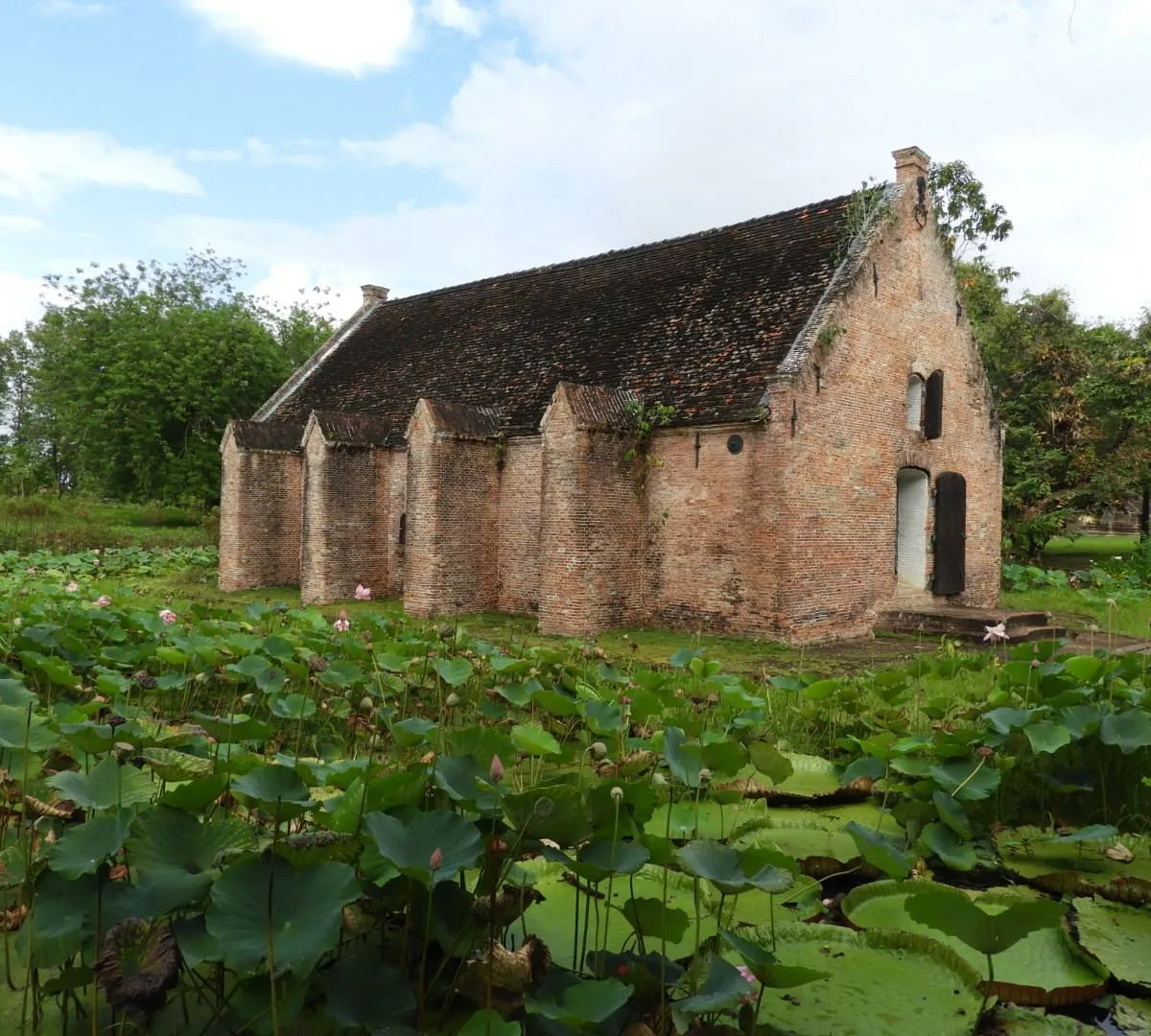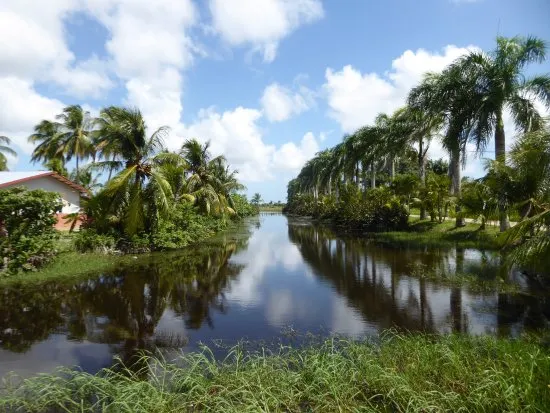1. Overview & Address of the Place
Waterkant is the oldest and one of the most significant streets in Paramaribo, Suriname. Located along the Suriname River, it historically served as a bustling quay where ships docked to unload goods and passengers. The street stretches from the Onafhankelijkheidsplein (Independence Square) to the Central Market, forming a vital part of the city’s historic center. In 2002, Waterkant was designated a UNESCO World Heritage Site as part of the Historic Inner City of Paramaribo.
Location – Google Maps link
2. History
- Colonial Origins: Established in the 17th century, Waterkant became the primary docking area for ships arriving in Paramaribo.
- Name Significance: The name “Waterkant” translates to “waterside,” reflecting its location along the river.
- Architectural Development: Following the devastating fire of 1821, architect Johan August Voigt redesigned the street, introducing monumental white wooden buildings with galleries.
- Cultural Hub: Over the centuries, Waterkant has been a center for trade, culture, and social interaction in Paramaribo.
- Fire of 1821: A major fire destroyed about 400 houses in the city center, leading to significant rebuilding efforts.
- UNESCO Recognition: In 2002, Waterkant was included in the UNESCO World Heritage Site designation for Paramaribo’s historic inner city.
- Modern Role: Today, Waterkant serves as a lively promenade with restaurants, cafes, and cultural attractions.
- Historic Landmarks: Notable buildings along Waterkant include the Waag (Weigh House), Central Bank, and the Ministry of Social Affairs.
- Maritime Significance: The street’s proximity to the river underscores its historical importance in maritime trade.
- Preservation Efforts: Ongoing initiatives aim to maintain and restore the architectural integrity of Waterkant.
3. What Makes Waterkant Popular?
Waterkant is renowned for its blend of historical architecture, cultural significance, and vibrant atmosphere. The street’s colonial-era buildings, many of which have been meticulously restored, offer a glimpse into Paramaribo’s past. Its location along the Suriname River provides picturesque views, making it a favorite spot for both locals and tourists. The presence of cafes, restaurants, and cultural institutions adds to its appeal as a social and cultural hub.
4. Overall Ratings (1 to 5 Stars)
Rating: ★★★★☆ (4/5)
Waterkant offers a rich historical and cultural experience. While the area is well-preserved and vibrant, some parts may show signs of wear due to age and environmental factors.
5. Weather
Paramaribo experiences a tropical rainforest climate with high humidity and temperatures averaging around 30°C (86°F). The wet season runs from December to July, with the heaviest rainfall from April to July, making the drier months (August to November) more favorable for travel.
6. Nearest Five Hotels
- Royal Torarica – A luxury hotel offering modern amenities and river views.
- Torarica Hotel – Provides upscale accommodations with a range of facilities.
- Hotel Krasnapolsky – A historic hotel located in the city center.
- Hotel Palacio – Offers comfortable lodging with convenient access to local attractions.
- Hotel Residencial – A budget-friendly option with basic amenities.
7. Timings
Waterkant is accessible year-round, with the main attractions open daily. However, some museums and historic buildings may have specific visiting hours, typically from 9:00 AM to 5:00 PM. It’s advisable to check for the latest details before visiting.
8. Time Required to Visit
To fully explore Waterkant, including its colonial buildings and nearby attractions, visitors typically spend about 1 to 2 hours walking around the area.
9. Entry Fees & Ticket Booking Details
There are no entry fees for walking along Waterkant itself. However, certain museums or attractions nearby may charge a nominal fee for entry. Tickets can usually be purchased on-site or through local tour operators.
10. Things to See & Do
- Visit the Waag (Weigh House): Explore this historic building that once served as a customs house.
- Stroll Along the Promenade: Enjoy the scenic views of the Suriname River and colonial architecture.
- Dine at Riverside Cafes: Sample local cuisine at one of the many eateries along the street.
- Shop at Craft Markets: Browse handmade goods and souvenirs at nearby markets.
- Take a Boat Tour: Experience the river from a different perspective with a guided boat tour.
11. Best Time to Visit
The optimal time to visit Waterkant is during the drier months from August to November, when the weather is more conducive to outdoor activities.
12. Nearest Parking Spots
Parking is available near key attractions in Paramaribo, particularly around the Presidential Palace and Saint Peter and Paul Cathedral. Visitors are encouraged to use public transportation or taxis for easier access.
13. Tips for Visitors
- Wear Comfortable Footwear: The cobblestone paths can be uneven.
- Stay Hydrated: The tropical climate can be hot and humid.
- Respect Local Customs: Be mindful of cultural norms and practices.
14. How to Reach the Place
Waterkant is centrally located in Paramaribo and can be easily reached by taxi, public transportation, or on foot from nearby accommodations and attractions.
15. Nearby Attractions to Combine for the Visit
- Fort Zeelandia – A historic fort housing the Surinamese Museum.
- Presidential Palace – A neoclassical building located near Waterkant.
- Saint Peter and Paul Cathedral – A wooden Gothic Revival cathedral in the city center.
- Palmentuin (Garden of Palms) – A public park with a variety of palm species.


